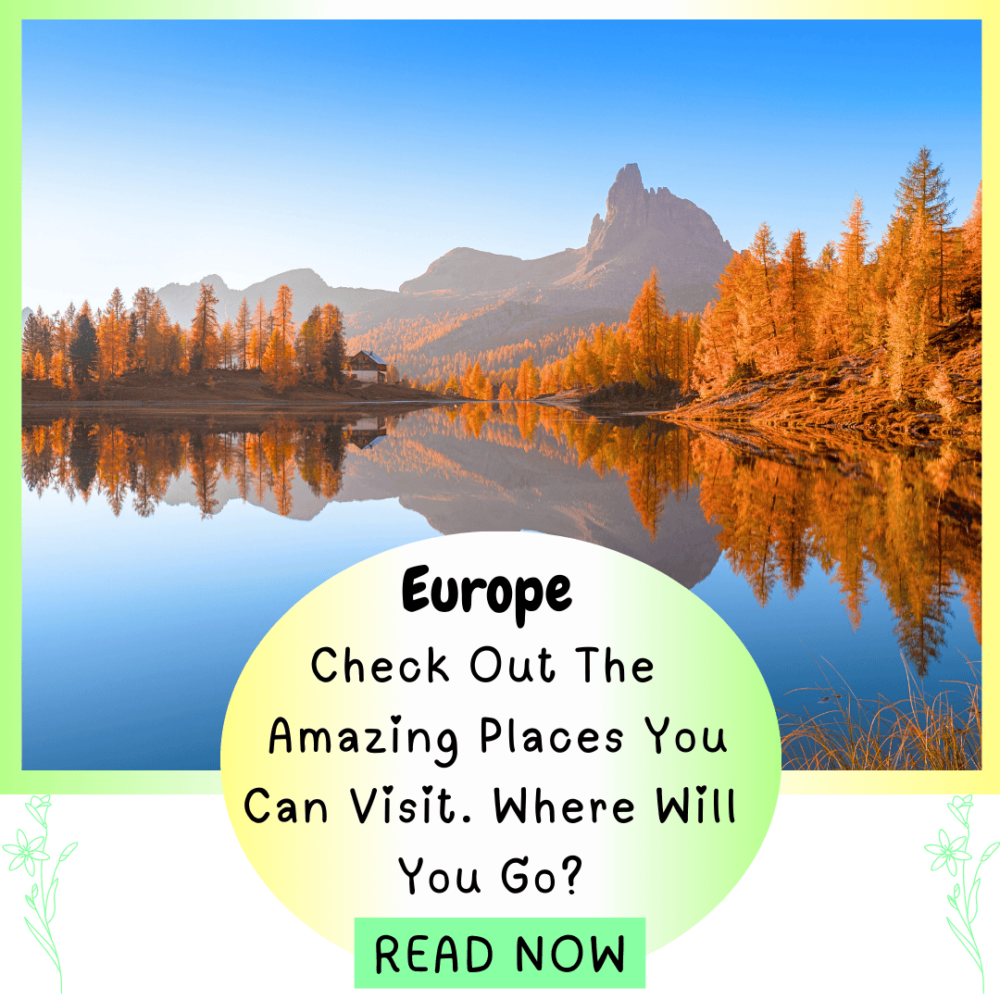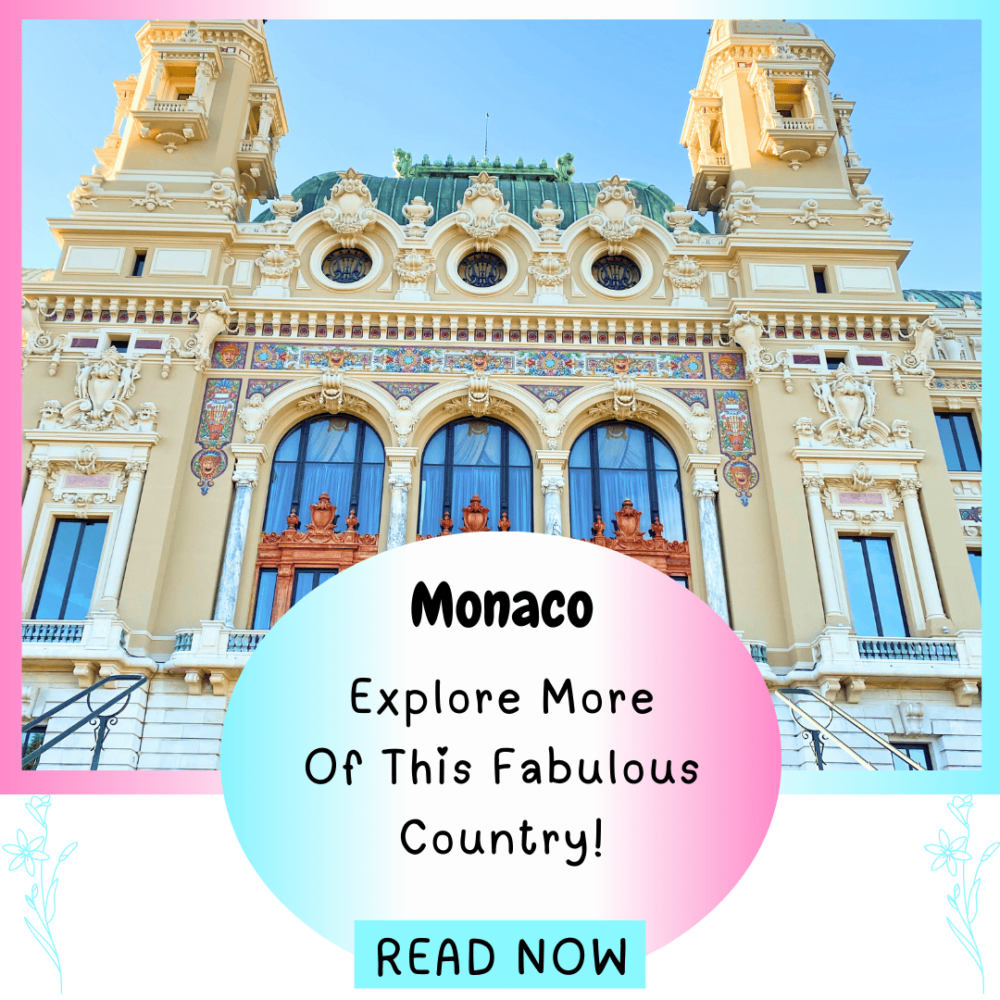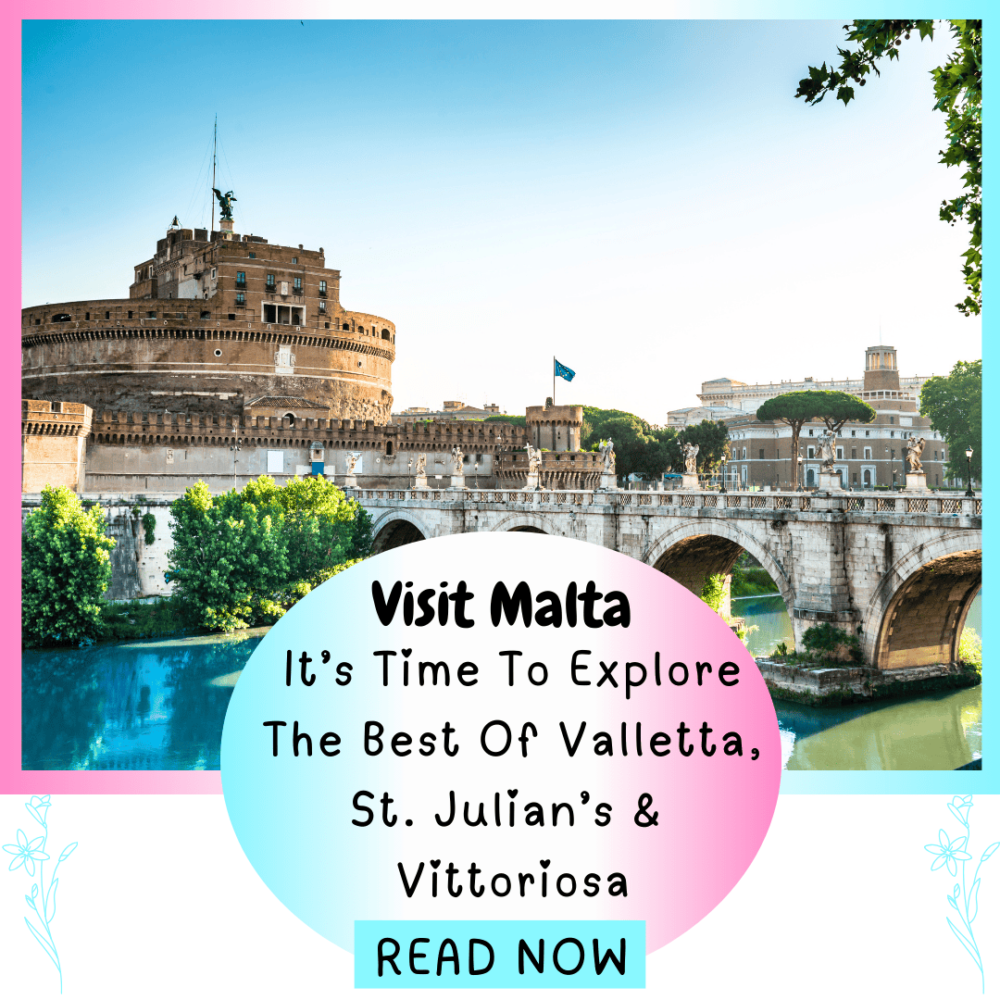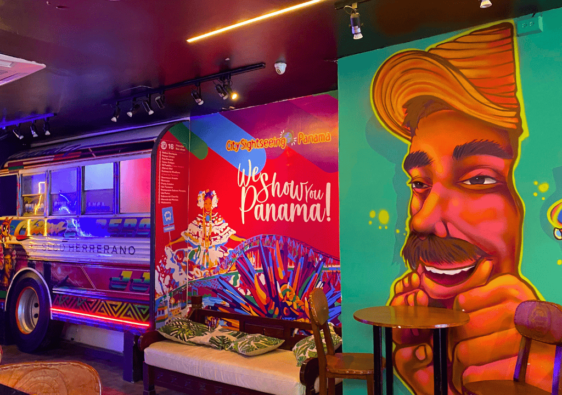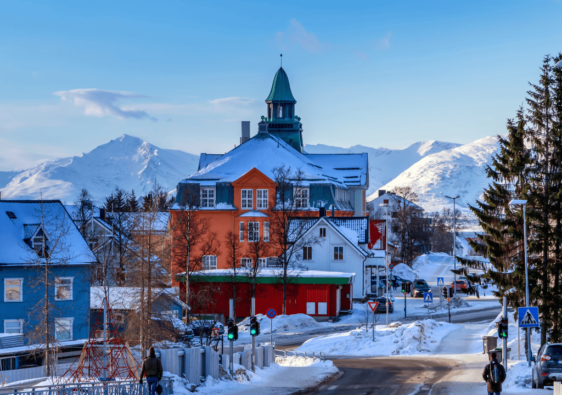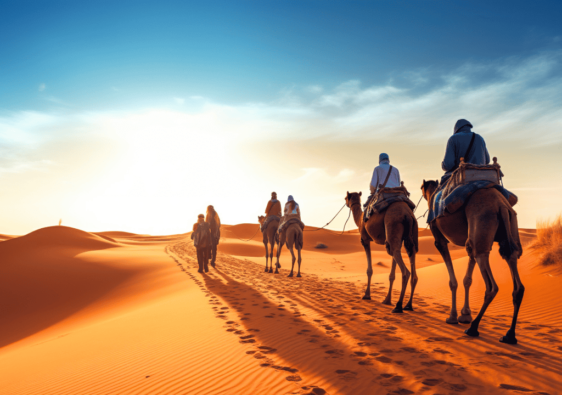Where Will You Go?
Thinking about travelling abroad this year but can’t decide where to go? With so many amazing options, it’s no wonder you’re feeling a bit stuck! If you’re in the UK, Europe is a fantastic place to start your journey.
Choosing the best countries was no easy task, but I’ve narrowed it down to five unforgettable destinations. Here’s your guide to the top five European countries you should explore in 2025!
If you want to go on a solo trip but are unsure where to start, the Female Solo Travel Ebook covers everything you need to know for an epic solo adventure!
TOP 5 BEAUTIFUL COUNTRIES IN EUROPE TO EXPLORE IN 2025
ONE
LONDON TO ICELAND
Flights: 3 Hours
Iceland, known as the Land of Fire and Ice, is a captivating island nation in the North Atlantic Ocean. It is located midway between North America and Europe. It’s famous for its stunning natural beauty and boasts majestic waterfalls, glaciers, geysers, and volcanic landscapes.
Reykjavik, Iceland’s capital, is a vibrant city with colourful buildings, a lively arts scene, and a blend of modern and traditional charm. Iceland’s small population is known for its warm hospitality, making it a welcoming destination for those seeking outdoor adventures and cultural experiences against extraordinary landscapes.
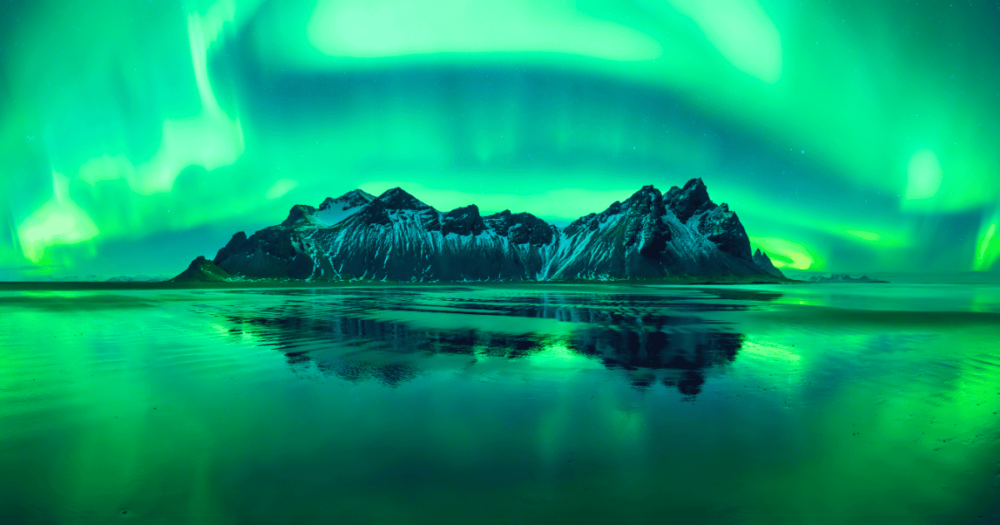
Aurora reflections on Stokksnes Black Beach in Iceland with Vestrahorn mountains
Language & Currency In Iceland
Language: Icelandic is the official language spoken in Iceland, but English is widely spoken and understood, especially in tourist areas, making it convenient for international travellers. Icelandic is considered a relatively rare language as it is not usually taught outside of Iceland.
Currency: Iceland’s official currency is the Icelandic Króna (ISK). While credit and debit cards are widely accepted, it’s a good idea to always have some local currency on you, no matter what country you go to. You can find ATMs and currency exchanges located in urban areas in Iceland.
Winter Vs Summer In Iceland
Winter. Iceland’s winter season extends from December to February. The days are short, and the country experiences limited daylight hours of approximately 4 or less. Winter weather conditions can range from around -1 to 5 degrees Celsius in coastal areas and colder in the interior areas. During the winter months, the popular Northern Lights can be seen.
Summer. Iceland’s summer is typically from late June to early September. During summertime, the days are short, and the country experiences the phenomenon of the Midnight Sun, where the sun remains visible for most of the night. Sunlight hours usually last from 21 to 24 hours. Temperatures in summer range between 10 and 20 degrees Celsius.
Transport In Iceland
Iceland is known for its scenic routes and stunning landscapes. It is highly recommended that you hire a car to enjoy this beautiful country at your own pace. Be aware that weather conditions can be unpredictable, so consider choosing a 4WD for safety.
Like most European countries, vehicles drive on the right-hand side of the road. If you prefer not to hire a car, select a Bus Transfer from/to Reykjavik. Iceland has a bus system connecting significant towns and cities and tours to get you around the country.
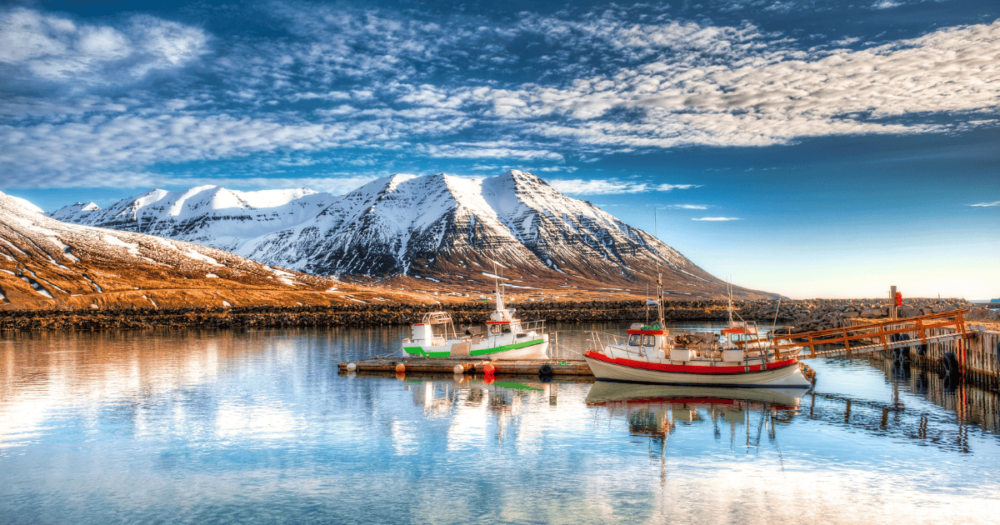
Olafsfjordur is a city in northwestern Iceland
Things To Do In Iceland
Places To Stay In Iceland
Reykjavik. Iceland’s capital and largest city, Reykjavik, is a popular area for accommodation. It boasts a range of hotels, guesthouses, hostels, and boutique accommodations, perfect for all different types of travellers. Staying in Reykjavik offers easy access to the city’s vibrant cultural scene, restaurants, and attractions and is a central hub for day trips to nearby landmarks.
Vik. Located in the south of Iceland, Vik is a charming village known for its iconic black sand beaches and proximity to landmarks such as Reynisfjara and Dryhólaey. Accommodations in Vik range from hotels to guesthouses, providing a cosy and scenic getaway for exploring the island’s south side.
Akureyri. Akureyri is Iceland’s second-largest city, often called the ‘Capital of the North’. It is situated in the northern part of the country. It offers a variety of accommodation choices, including hostels and guesthouses. Akureyri is known for its botanical gardens, vibrant arts scene, and proximity to natural wonders like Lake Myvatn and Godafoss waterfall.
My Hotel Picks:
TWO
LONDON TO MONACO
Flights: 2.5 Hours To Nice (France) + 30 Minutes Train
Monaco, a tiny but glamorous gem on the French Riveria, is renowned for its sophistication and stunning Mediterranean views. Nestled between France and the Mediterranean Sea, Monaco is known for its upscale, popular casino scene, luxury yachts, supercars, and the famous Grand Prix motor race. Despite its small size, Monaco offers many attractions, such as the Oceanographic Museum and the Princes Palace.
The capital city, Monte Carlo, basks in wealth and elegance, featuring upscale boutiques, fine dining, and the iconic Casino de Monte-Carlo. With a reputation for glitz and glamour, Monaco stands out as a playground for the wealthy, with its dazzling architecture, high-end shopping, and picturesque coastline. Two days is perfect for this short European getaway.
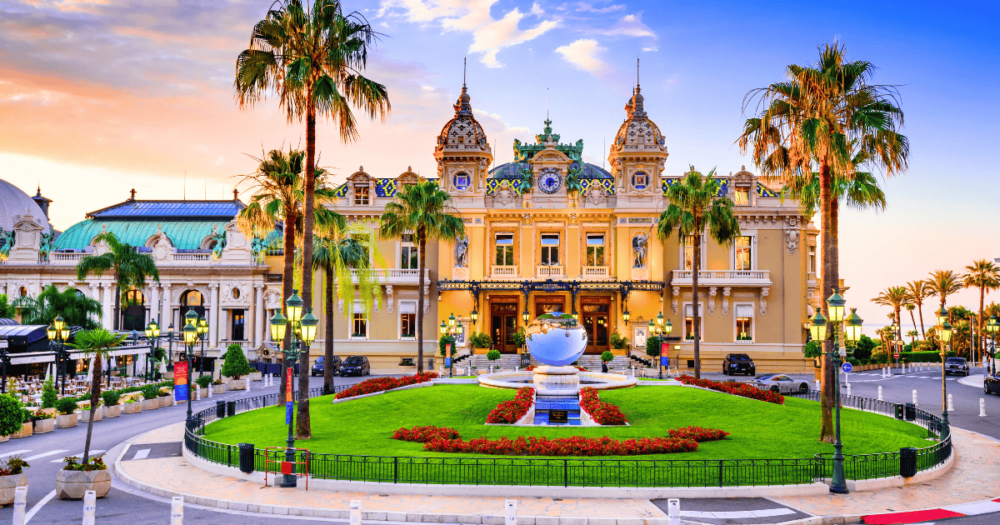
Monte Carlo Casino, one of Europe’s most well-known casinos
Language & Currency In Monaco
Language: Monaco’s official language is French. As a French-speaking principality, most official communications, signs, and interactions are conducted in French. However, due to its international nature and influx of tourism, many residents and business owners also speak other languages, including English and Italian.
Currency: Monaco’s official currency is the Euro (EUR). It adopted the Euro as its official currency in 2002, replacing the French Franc. Credit and debit cards are widely used in Monaco, so you shouldn’t have any issues. However, I advise you to keep a small amount of money for miscellaneous purchases.
Winter Vs Summer In Monaco
Winter. Thanks to the Mediterranean Sea, winter in Monaco is relatively mild compared to other European countries. It averages 9 to 15 degrees Celcius in December – February and rarely experiences extreme cold. Despite winter, Monaco still has a good amount of sunshine. Monaco hosts events, festivals, and funfair rides during winter, making it a great place to hang out.
Summer. The heat season in Monaco is a vibrant and bustling season characterized by warm temperatures, lively events, and a glamorous atmosphere with daily boating activities. Summer typically spans from June to August, with daytime temperatures reaching up to 30 degrees Celcius. Monaco hosts various events during summer, including the well-known Monte-Carlo Sporting Summer Festival and Formula 1 Grand Prix in late May.
Transport In Monaco
Because of Monaco’s size, attractions are easily accessible by foot. For money-saving and convenience, visit all the sites on a Hop-On-Hop-Off Tour. This tour allows you to hop on and off the buses, stopping at attractions as often as you like with a 24 to 48-hour pass.
Taxis are also regularly available in Monaco and usually run at a meter rate. Although parking can be challenging, you can hire a car to explore Monaco instead, especially the surrounding French Riveria. Alternatively, renting an electric scooter is also a fun and eco-friendly way to see the best bits of Monaco.
If you plan only a half-day visit, you can take the 2-hour Scenic Tour from Nice. On this tour, you’ll drive a 3-wheeled vehicle and explore all the best bits of Monaco.
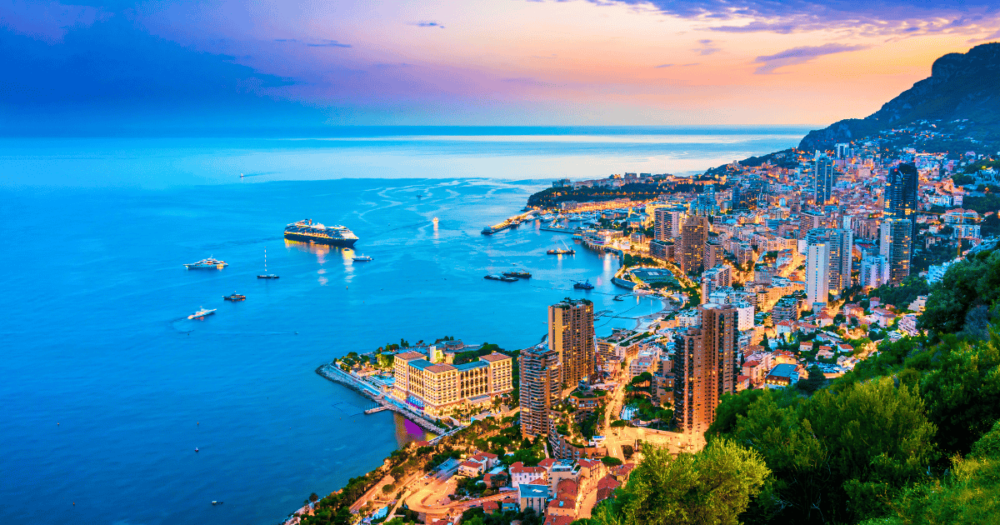
View of the city of Monaco on the French Riviera after sunset
Fun Activities In Monaco
Areas To Stay In Monaco
Monte Carlo. Monte Carlo is the most famous and luxurious district in Monaco. Known for its glamorous atmosphere, upscale hotels, designer shops, gourmet dining, and the iconic Casino de Monte-Carlo, this area is popular with visitors seeking a sophisticated experience. Monte Carlo boasts stunning hotels, many synonymous with luxury and sophistication. You can also find boutique hotels, resorts, luxury suites, and exclusive villas here.
La Condamine. Stay in the bustling district of La Condamine for lively markets, such as the Condamine Market, where you can experience local flavours. La Condamine is centrally located, making exploring Monaco’s attractions, including Port Hercules, convenient. Hotels and guesthouses are available in this area.
My Hotel Picks:
THREE
LONDON TO MALTA
Flights: 3.5 Hours
Malta is a small island nation in the Mediterranean Sea. It boasts a rich history, stunning landscapes, and a vibrant culture. With a warm climate and welcoming locals, it’s a welcoming destination for tourists.
Malta’s coastline is adorned with charming beaches and clear waters, providing fantastic opportunities for swimming and diving. Valletta, the capital of Malta, is a UNESCO World Heritage Site known for its historic architecture and charming streets, making it a fantastic option for your next European trip.
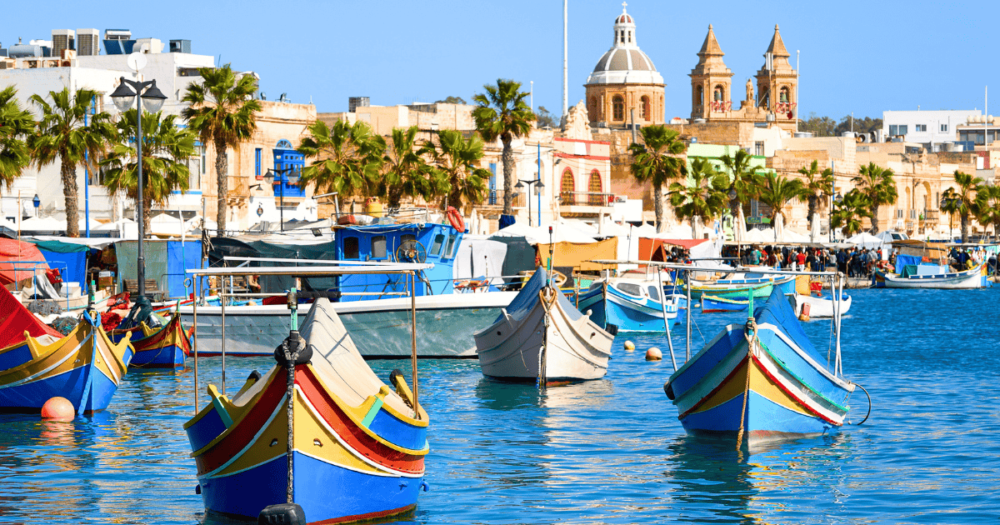
Marsaxlokk village harbour of Malta during summer
Language & Currency In Malta
Languages: Malta has two official languages: Maltese and English. Maltese, a Semitic language with a distinct character, is the national language of most people. English is also widely used for official, administrative, and educational purposes, making most Maltese people fluent in both languages.
Currency: Malta’s official currency is the Euro (EUR). It adopted the Euro as its official currency in 2008 when it joined the Eurozone. ATMs are widely available for currency withdrawals and most purchasing payments; however, keep a small amount of Euros on you just in case.
Winter Vs Summer In Malta
Winter. Thanks to the Mediterranean Sea, Malta’s winters are not as cold as England’s. Typical temperatures range from 10 to 19 degrees Celsius from November to February. Although winter is a quieter time for tourism in Malta, it’s a season with its charm, making it a great location to visit.
Summer. Temperatures in Malta during summer typically range from 25 to 35 degrees Celcius from June to August. Activities based on the sea resume from the winter months, and the beaches become lively again. Bars and clubs also return to being vibrant, and many visitors flock to do tours and enjoy the beauty of what Malta offers in summer.
Travelling alone but feeling nervous? The How To Travel Solo Ebook has tips for planning safe, confident, and unforgettable adventures!
Transport In Malta
Malta has an extensive public bus network connecting various towns and villages nationwide. Renting a car provides flexibility and convenience for exploring Malta, especially if you want to visit more remote areas or less accessible roads. Unlike most of Europe, Malta drives on the left-hand side of the road.
Malta is relatively small and compact, so walking to the main attractions is an option. Alternatively, Malta’s Hop-on-Hop-off Bus Tour give you two routes to explore with a day pass; feel free to hop on and off as you like to explore all the attractions.

The HOHO Bus in Malta takes you around to all the key locations
Must-Do Activities In Malta
Places To Stay In Malta
Valletta. Malta’s capital, Valletta, is a UNESCO World Heritage Site and a popular place to stay. Staying in Valletta puts you in the heart of the island’s history, with easy access to landmarks like St. John’s Co-Cathedral, the Grand Master’s Palace, and the Upper Barrakka Gardens. You’ll find a range of boutique hotels and charming guesthouses.
Silema. This famous coastal town has waterfront promenade shopping places and seaside cafes. Accommodations offer stunning views of the Mediterranean Sea. Getting around other areas, such as Valletta, is fairly easy, making it a convenient base for exploring.
St.Julian’s. Known for its lively nightlife, entertainment, and dining options, St.Julian’s, particularly the Pacevile area, is an excellent choice if you want to be close to the bustling social scene. You’ll find luxury hotels and boutique guesthouses in St.Julian’s.
My Hotel Picks:
FOUR
LONDON TO SWITZERLAND
Flights 1.5 Hours
Switzerland, nestled in the heart of Europe, is a land of stunning Alpine landscapes, craftsmanship, and cultural diversity. The nation is a haven for outdoor enthusiasts, offering breathtaking mountain ranges, pristine lakes, and charming villages. Its cities, including Zurich and Geneva, blend modernity with historical charm.
Switzerland is renowned for its delicious chocolates, fine watches, and refined taste. It’s also a peaceful country with a strong economy and a high quality of life. Whether skiing in the Alps, exploring medieval towns, or enjoying Swiss cheese fondue, Switzerland is a captivating destination.

Scenic traditional mountain village Lauterbrunnen with waterfall surrounded by snow peaks of Alps
Language & Currency In Switzerland
Languages: Switzerland has four official languages, reflecting its diverse linguistic and cultural heritage. It is one of two countries in Europe with four official languages. German is Switzerland’s most widely spoken language and the predominant language in the central and northern regions. French is mainly spoken in western Switzerland, including Geneva and Lausanne. Italian is spoken in the southern part of Switzerland, and Romansh, a Romance language, is spoken in some parts of the canton of Graubunden and is the most minor spoken language in Switzerland.
Currency: Switzerland’s official currency is the Swiss Franc (CHF). The Swiss Franc is advisable for transactions, although some tourist areas accept major credit cards. ATMs and currency converters are regularly found in Switzerland.
Winter Vs Summer In Switzerland
Winter. Switzerland in winter is a magical season, transforming the country into a wonderland with snowy landscapes and various outdoor activities. Typically, the temperature ranges from -5 degrees to 7 degrees Celcius during December – February. It’s the perfect time for winter sports, including skiing, snowboarding and tobogganing. Some regions host ice festivals featuring ice sculptures, ice skating competitions and other winter-themed activities.
Summer. Summer temperatures in Switzerland are generally mild to warm, with daytime temperatures ranging from 20 to 30 degrees Celsius. The Swiss Alps are a haven for nature lovers during the summer. Snow-capped peaks give way to Green meadows filled with colourful wildflowers, creating a stunning contrast. The longer daytime hours and comfortable temperatures make summer an ideal time for visiting beautiful Switzerland.
Transport In Switzerland
Switzerland has a well-developed and efficient transportation system, making it easy for residents and visitors to travel. Many Swiss cities, including Zurich and Basel, have tram services, making it easy to navigate urban areas. Switzerland is famous for its extensive and punctual train services; you can access cities, towns, and even remote mountain villages by train.
As Switzerland is home to several lakes, boat services also make it easy to get around. For a cheaper alternative, opt for a Hop-on-Hop-off Bus Tour to see as many attractions as possible or hire a car. Remember, most European countries drive on the right-hand side, including Switzerland.

Panorama of the Matterhorn mountain range
Cool Things To Do In Switzerland
Areas To Stay In Switzerland
Zermatt. Nestled at the foot of the iconic Matterhorn, Zermatt is a car-free resort town in the Swiss Alps. It’s a haven for winter sports adventurers and an excellent location for those wanting access to the Gorgnegrat Railway, Klein Matterhorn, and Hiking Trails. Zermatt has a range of boujee hotels, chalets, and lodges, all providing stunning views of the Matterhorn.
Lucerne (Luzern). Situated on the shores of Lake Lucerne, with the Swiss Alps as a backdrop, Lucerne is a picturesque city known for its well-preserved medieval architecture. It’s a central point for exploring this area’s surrounding regions and attractions, including Chapel Bridge and the Swiss Museum of Transport. Lucerne offers a mix of hotels, boutique guesthouses, and waterfront accommodations.
Interlaken. Located between Lake Thun and Brienz, Interlaken is a resort town that serves as a gateway to the Jungfrau region. It’s a popular destination for adventure sports and outdoor activities. Interlaken provides a range of accommodations, including hotels, hostels, and charming bed and breakfasts. You can do paragliding and skydiving in this location.
My Hotel Picks:
FIVE
LONDON TO CROATIA
Flights: 2.5 Hours
Croatia, nestled in southeast Europe along the Adriatic Sea, is known for its stunning coastlines, historic cities, and rich cultural heritage. With a diverse landscape that includes picturesque islands, mountains, and lush valleys, Croatia offers a unique blend of natural beauty and cultural treasures.
The capital city, Zagreb, showcases a charming mix of medieval and modern architecture. At the same time, coastal gems like Dubrovnik and Split boast ancient sites and vibrant waterfronts. Visitors are drawn to Croatia’s crystal-clear waters and Mediterranean cuisine, making it a winner on European trips.
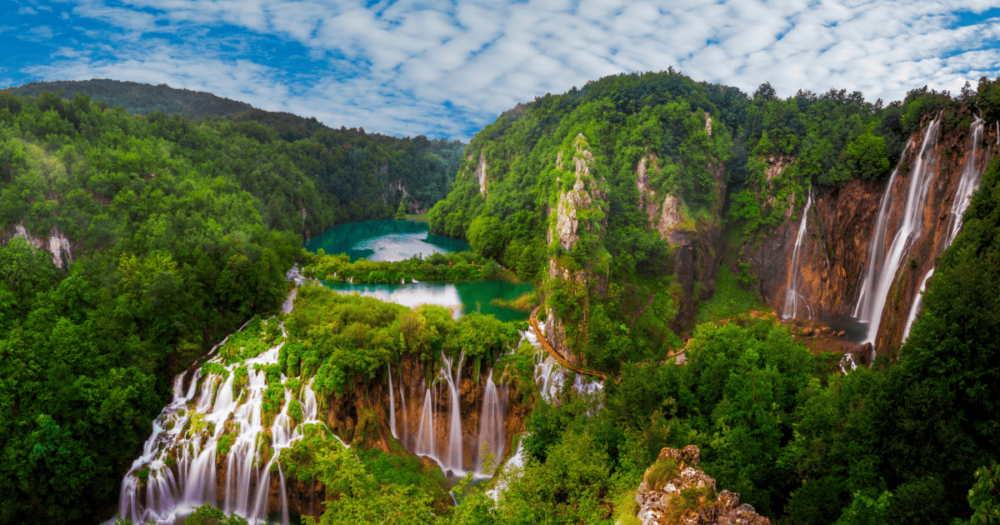
Panorama of Plitvice waterfalls
Language & Currency In Croatia
Language: Croatia’s official language is Croatian, a South Slavic language boasting a distinct linguistic identity within the Serbo-Croatian language group. Using the Latin alphabet, Croatian reflects a rich cultural and literary tradition that has evolved over centuries. Many Croatians speak English, especially among the younger generation, especially in urban areas and tourist destinations. English is also commonly taught in schools.
Currency: The Croatian Kuna (HRK) is the official currency; they continue using HRK instead of Euros, which were introduced in the 1990s. ATMs are widely available, and many stores and hotels take cards in Croatia, but always remember to carry some local currency for any country you visit.
Winter Vs Summer In Croatia
Winter. December – February brings a different charm to the country than the warmer months. Winters are relatively mild by the Adriatic Coast. Zagreb and Plitvice Lakes National Park experience colder temperatures and occasional snowfall, making them great places to visit for those who enjoy skiing. Depending on where you stay, temperatures in winter range from -5 degrees to 14 degrees Celcius.
Summer. Summer is a vibrant and popular time to visit Croatia, with temperatures reaching 35 degrees Celcius between June and August. The calmer sea allows island-hopping and water activities to commence. Croatia comes alive with summer festivals, events, and open-air performances.
Transport In Croatia
Renting a car is a popular choice for exploring Croatia, especially if you plan on visiting remote areas or scenic landscapes. Trains and public buses are extensive, and services are generally reliable.
Opt for the Hop-On-Hop-Off Bus Tour to get to all the main attractions at a relatively lower price. This tour allows you to stop at all the stops as often as you like in a one—or two-day pass. Onboard, you’ll receive earphones with interesting commentary about beautiful Croatia along the route.

Seaside of the Croatian town Opatija in summer
Things To Do In Croatia
Places To Stay In Croatia
Dubrovnik. Often referred to as the Pearl of the Adriatic, Dubrovnik is a UNESCO World Heritage Site known for its well-preserved medieval architecture, city walls, and stunning coastal views. Accommodation here ranges from pretty hotels within the city walls to seaside escapes along the Adriatic.
Split. Croatia’s second-largest city, Split, boasts a unique blend of Roman history and vibrant modern life. The UNESCO-listed Diocletian’s Palace is a major attraction, and accommodations include boutique hotels, guesthouses, and waterfront apartments. The city offers a lively atmosphere with restaurants, cafes, and cultural events.
Plitvice Lakes National Park. For nature lovers, Plitvice Lakes National Park is a must-visit destination. Known for its cascading waterfalls, crystal-clear lakes, and lush greenery, the park offers a serene escape. Accommodations in the surrounding area range from cosy guesthouses to hotels, providing easy access to the park’s stunning landscapes.
My Hotel Picks:
That’s A Wrap!
Europe is a continent like no other. Whether trekking through the Alps, strolling through the streets of Malta, or gazing into the stunning Northern Lights, a trip to Europe during winter or summer promises a tapestry of experience.
Europe remains an enduring destination, inviting travellers to immerse themselves in timeless beauty. So what are you waiting for? Be sure to add one of these countries to your list for a cheeky trip to Europe in 2024.
Want to travel solo but don’t know how? The Female Solo Travel Ebook has all the essential information for a successful solo adventure!
Want to discover other destinations outside of Europe? Check out more Destinations for inspiration.


